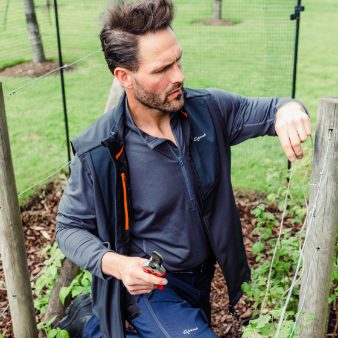They seek him here…

A tiny speck of red caught my eye as I wandered past the vegetable garden this week. A specimen of Anagallis arvensis - Scarlet Pimpernel - was growing amongst the shingle paving. A common plant of field margins and wild areas of the garden, its five-petalled flowers were famously used as a calling card by Baroness Orczy’s protagonist and hero who went by the ‘nom de guerre’ of The Scarlet Pimpernel.
Poisonous to humans and cattle, this diminutive and unassuming plant set my mind adrift with the thoughts of other common plants that can potentially cause death or severe discomfort which we casually find or plant around our gardens without a thought for potential danger. I once had a client who insisted I remove all the foxgloves from the garden should the children eat the leaves. I pointed out the hundreds of metres of yew hedging surrounding the borders. The foxgloves went, but the yew remained.
What other plants are potentially capable of felling a human or putting a loved family pet into an early grave? Famously, yew, monkshood, ragwort, digitalis, deadly nightshade, and oleander all have the potential for an unhappy ending. But what of the other plants we lovingly nurture? What lesser know perils lurk in our borders? Laurel can be harmful particularly if burnt and the smoke or fumes accidentally inhaled - cyanogenic glycosides can lead to heart palpitations and unconsciousness. Laburnum, that wonderful May flowering tree famously trained over arched walkways, is another plant with potentially dangerous, though rarely fatal, consequences. Its bean-like pods often attract children to the seeds inside. Giant Hogweed, that architecturally impressive 12ft umbellifer can cause terrible burns to the skin if handled or rubbed against. Large blisters can form and return in following years when the area is exposed to the sun, an example of photodermatitis or photosensitivity.
Even potatoes, a food eaten on a daily basis, can have their dangers. With high levels of solanine, a glycoalkaloid, symptoms can include diarrhea, vomiting, sweating, and abdominal pain. More seriously they can potentially cause birth defects if eaten during pregnancy.
But should we worry about the dangers of our garden plants? On the whole it seems that most occurrences of serious poisoning are caused by deliberate consumption. Yew berries are most commonly consumed with reports from GPs of actual deaths, close shaves, and patients requiring defibrillation multiple times. Reports of a gardener dying from brushing past monkshood (Aconitum) appear to be sensationalism whipped up by journalists. By far the largest group requiring visits to A+E are those from inexperienced foragers who mistakenly identify poisonous fungi as edible. So popular is the passion for collecting that in Europe pharmacists are trained in the identification of mushroom species.







